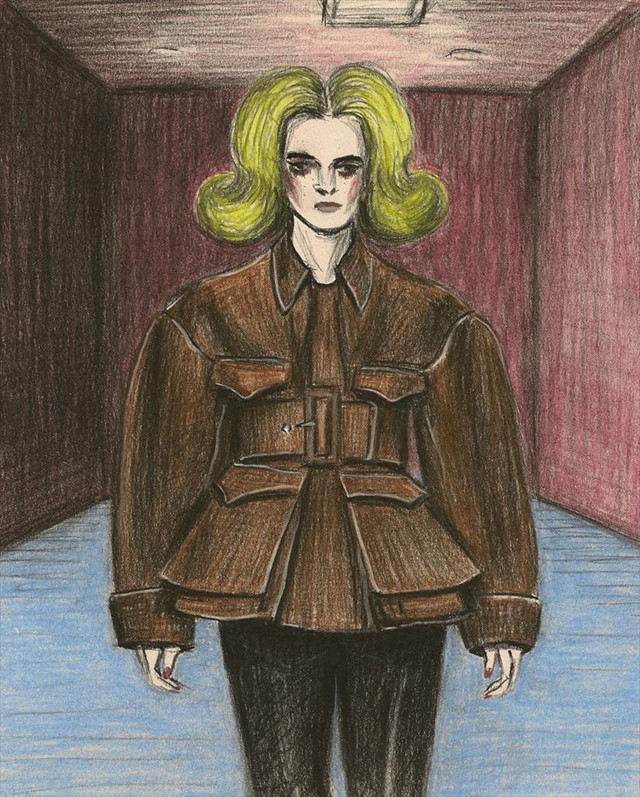Much has been made of the return to a curvier silhouette in recent seasons – is it down to Miuccia Prada? Or do we have TV series Mad Men to thank? Or is it simply that these severe times call for a voluptuousness of aspect and a touch of cushioning
Much has been made of the return to a curvier silhouette in recent seasons – is it down to Miuccia Prada? Or do we have TV series Mad Men to thank? Or is it simply that these severe times call for a voluptuousness of aspect and a touch of cushioning that is missing from the incipient austerity. Could it be, in fact, that very austerity has inspired designers to copy the sartorial mores of our forebears?
Either way, waspish waists, full bosoms and A-line skirts have cropped up on plenty of designer catwalks over the past eighteen months; the hourglass is a la mode. So imagine the surprise when designers gave it a radical overhaul for spring/summer 2012.
At Céline, Balenciaga and Yohji Yamamoto, there were broad-shouldered, boxy cuts that looked entirely fresh and new. This was because they were – deep shoulder seams that fell some distance below their anatomical namesakes gave coats, jackets, tunic tops and blouses a surprising and imaginative look, while the repositioning of waists and a variance of focal point made skirts and trousers more exciting and less conspicuously bourgeois than they have been these past few years.
Waists were defined, but not as we know them. Phoebe Philo’s wide-sleeved outerwear was belted in the armpits with cartoonishly broad buckles. Part empire line, part obi, these structured a silhouette that was long but not lean (as we are so used to) and curvy but with a sci-fi edge, rather than that of Jessica Rabbit. It was the next step after Prada’s boldly literal Forties cuts in her autumn/winter Miu Miu collection, and a development of the curvilinear menswear outline that Raf Simons has played with for many seasons now.
Nicolas Ghesquière took the look even further at Balenciaga, with A-line skirt dresses that emphasised not the narrowness of the waist, but its breadth. Similarly, tailored jackets in heavily rigid technofabrics made lumpen and deliberately out-sized cocoons that spoke of this designer’s intent. Ghesquiere’s clothing is not about form-flattering or camouflage; he deliberately cuts his cloth according to his own tastes, with bagged-out hips and boxy jackets that many more timid customers might balk at.
For them, the trend appeared in a more subdued and softened vein at Stella McCartney and Lanvin, where shoulders were wide and anti-fitted, and jackets were roomy without swamping the figure. McCartney achieved this by working with light, pyjama-esque material, while Alber Elbaz explored the illusory effects of tapering broad lapels.
And Yamamoto, the master of anti-fit (he who once added extra sleeves to garments or simply let them trail to the floor), matched jackets that were almost as wide as they were long with mannish trousers, hitched up onto the waist as if borrowed from the paternal wardrobe. All were classic tailored pieces done with the rigour so associated with this name, but they looked brand new. And that is the beauty of a new silhouette: it doesn’t happen very often, but when it does – and when it really takes hold - everything is invigorated. Truly, spring/summer 2012 will be a season of rebirth and renewal fashion-wise. Let’s just hope the economy can re-adjust its silhouette too, and without too much belt-tightening.
Harriet Walker is a fashion writer at The Independent. Her book Less is More: Minimalism in Fashion is out now, published by Merrell. Zoë Taylor has appeared in Le Gun, Bare Bones, Ambit and Dazed & Confused. She is currently working on her third graphic novella and an exhibition.
